Country
Crash of a PZL-Mielec AN-2R in Voronovo
Date & Time:
Aug 25, 2006
Registration:
RA-32706
Survivors:
Yes
Schedule:
Voronovo - Voronovo
MSN:
1G212-11
YOM:
1985
Crew on board:
2
Crew fatalities:
Pax on board:
0
Pax fatalities:
Other fatalities:
Total fatalities:
0
Circumstances:
Few minutes after takeoff from Voronovo, the crew encountered engine problems. He elected to maintain altitude but the aircraft descended, collided with trees and crashed in a wooded area located 7,5 km from the departure point, bursting into flames. Both pilots escaped uninjured while the aircraft was totally destroyed by a post crash fire.
Probable cause:
Engine failure for unknown reasons.
Crash of a PZL-Mielec AN-2P in Tayinsha: 1 killed
Date & Time:
Jun 17, 2006 at 0630 LT
Registration:
UN-70367
Survivors:
Yes
Schedule:
Tayinsha - Tayinsha
MSN:
1G141-21
YOM:
1973
Crew on board:
2
Crew fatalities:
Pax on board:
0
Pax fatalities:
Other fatalities:
Total fatalities:
1
Circumstances:
The crew was completing a crop-spraying flight in the region of Tayinsha, North Kazakhstan. While flying at a height of about 10-15 metres, the crew wanted to impress a group of women working in the field, initiated risky manoeuvres and eventually lost control of the aircraft that rolled steeply to the left and crashed upside down. The aircraft was destroyed and both pilots were seriously injured. Few days later, one of them died from his injuries.

Crash of a PZL-Mielec AN-2R in Krępsko
Date & Time:
May 24, 2006 at 1921 LT
Registration:
SP-FLY
Survivors:
Yes
Schedule:
Krępsko - Krępsko
MSN:
1G170-45
YOM:
1977
Crew on board:
2
Crew fatalities:
Pax on board:
0
Pax fatalities:
Other fatalities:
Total fatalities:
0
Captain / Total hours on type:
1334.00
Copilot / Total hours on type:
4000
Aircraft flight hours:
4282
Circumstances:
The single engine aircraft departed Krępsko Aerodrome at 1850LT on a local spraying mission part of a beetle control program. About 10 minutes after takeoff, a leak in the atomizer system forced the crew to return. Repairs were completed and the crew again took off 20 minutes later. Shortly after rotation, at a height of about 50-60 metres, the engine surged and suffered vibrations. The crew decided to return when the aircraft impacted birch trees and crashed in a wooded area, bursting into flames. Both pilots were uninjured while the aircraft was totally destroyed by a post crash fire.
Probable cause:
The likely cause of the accident was a leak in the fuel system within the engine compartment, resulting in the fuel supply to the carburetor to be cut off and causing the engine to stop. After the fuel leaked in the engine compartment, it ignited while contacting high temperature components, causing a major fire that destructed the aircraft.
Final Report:



Crash of a PZL-Mielec AN-2P in Göktepe
Date & Time:
May 6, 2006 at 2000 LT
Registration:
ER-35538
Survivors:
Yes
Schedule:
Izmir – Adana
MSN:
1G114-50
YOM:
1970
Crew on board:
4
Crew fatalities:
Pax on board:
2
Pax fatalities:
Other fatalities:
Total fatalities:
0
Circumstances:
The single engine aircraft was leased by a regional Turkish operator to perform a flight from Izmir to Adana with 4 pilots and 2 engineers from the Moldovan Company. En route, the crew encountered bad weather conditions with limited visibility due to heavy rain falls, and elected to make an emergency landing. The aircraft crash landed in a hilly terrain located near Göktepe. All 6 occupants were slightly injured while the aircraft was damaged beyond repair.
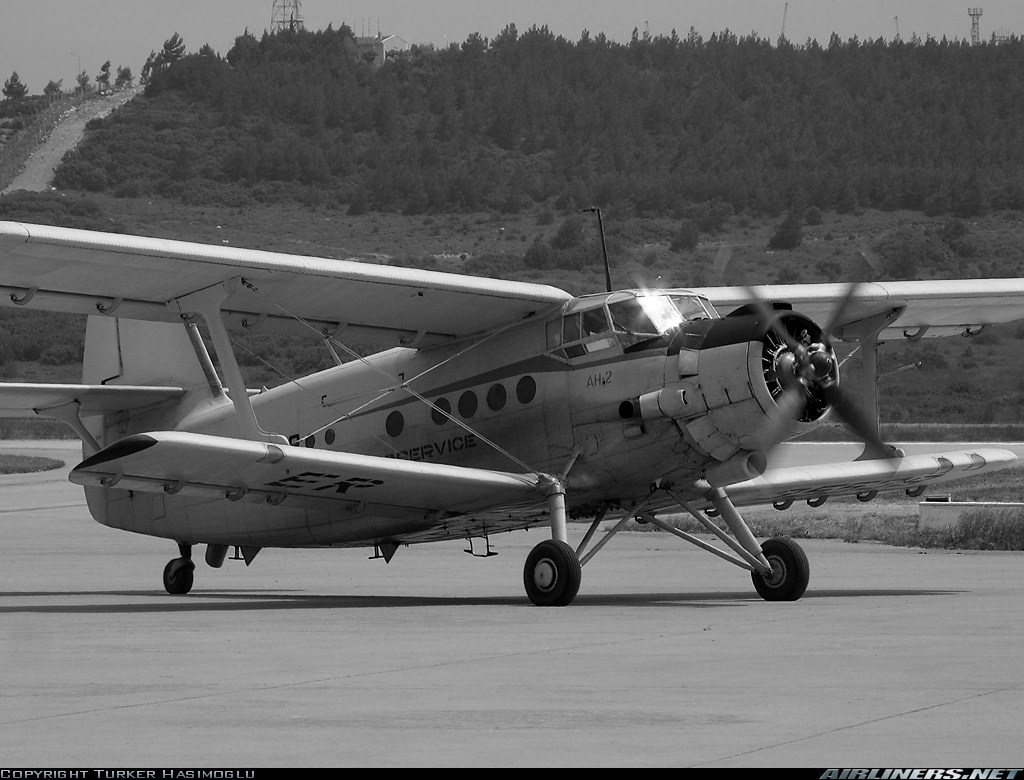
Crash of a PZL-Mielec AN-2R in Tersky: 4 killed
Date & Time:
Apr 23, 2006 at 2019 LT
Registration:
RF-00451
Survivors:
Yes
Schedule:
Tersky - Tersky
MSN:
1G218-05
YOM:
1986
Crew on board:
1
Crew fatalities:
Pax on board:
4
Pax fatalities:
Other fatalities:
Total fatalities:
4
Circumstances:
Around 2000LT, the pilot departed Tersky on an unauthorized local flight with four passengers. While cruising at a height of about 50 metres, the aircraft went out of control and crashed in an open field located one km from the departure point. A female passenger was seriously injured while four other occupants were killed. The aircraft was destroyed.
Probable cause:
The pilot failed to prepare the flight according to procedures and did not follow the pre-takeoff checklist. As a result, he departed Tersky with the flaps and ailerons stilled locked.
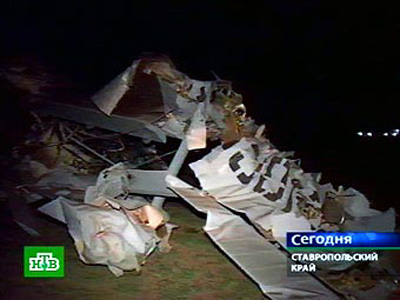
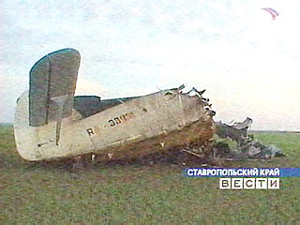
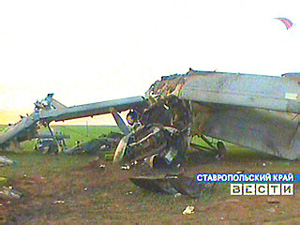

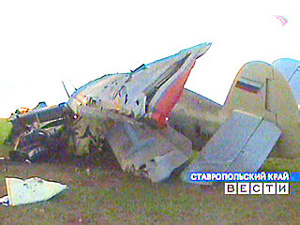
Crash of a PZL-Mielec AN-2TP near Sangar
Date & Time:
Nov 18, 2005 at 1407 LT
Registration:
RA-02252
Survivors:
Yes
Schedule:
Sangar – Segyan-Kyuel – Sangar
MSN:
1G234-06
YOM:
1989
Crew on board:
2
Crew fatalities:
Pax on board:
10
Pax fatalities:
Other fatalities:
Total fatalities:
0
Circumstances:
The aircraft was engaged in an ambulance flight from Sangar to Segyan-Kyuel and back. Because of poor weather the flight was delayed a couple of hours. At ETD, weather conditions at Sangar Airport was as follows: visibility more than 10 km, scattered clouds at 800 metres, overcast at 3,000 metres, temperature -22° C, dewpoint -23° C, pressure 765 mm Hg. Weather forecast en route included a few stratocumulus clouds between 1,400 and 1,700 metres, significant altostratus clouds between 2,700 and 3,500 metres. The mountainous area over which the Antonov was to fly moderate orographic turbulence was present in the layer from 900 to 1,700 meters, and possible downdrafts on the lee side of ridge in the same altitude range. These conditions were not reported to the crew. Then medical equipment with a weight of 400 kg and passengers arrived at the airport by ambulances. The captain expected seven passengers, but three additional passengers had arrived, without having tickets. The names were added to the passenger list and the copilot arranged the payment of the fare. No seats were available for two passengers, so they had to sit on some hand luggage in the aisle. At 04:46 UTC the aircraft departed from Sangar and climbed towards the mountainous terrain. The highest point along the route was at an elevation of 1,976 metres. The minimum safe altitude was 2,515 metres. The pilot climbed VFR and maintained visual separation from the snow-covered mountains. At an altitude of 1,300 metres the Antonov entered an area with strong turbulence. The aircraft was caught in a downdraft. In an attempt to stop the plane from descending further, power was added to nominal, then to the takeoff power. With rising terrain it was impossible to continue. The pilot decided to carry out a 180° turn to the left over downsloping terrain. This brought the plane downwind with a 30° bank instead of the recommended 20°. As a result, the rate of descent increased and after it rolled to an angle of 120°, the left lower wing contacted a cliff. The aircraft lost speed and crashed on the snow covered mountain. All 12 occupants were rescued, among them four were seriously injured. The aircraft was destroyed.
Probable cause:
The following findings were identified:
- The crew carried out a flight at a height lower than the minimum safe altitude,
- Incorrect estimation by the crew of the prevailing situation, which led to a late decision to return to the airport of departure under the conditions of orographic turbulence and airspace limited by mountains,
- Deficiencies in the flight instructions at the airport Of Sangar, due to the absence a.o. of an altitude diagram of the route of flight, which would have shown that it was impossible for the airplane, according to its technical flight characteristics, to gain enough height within 10 km after takeoff,
- The incorrect weather forecast along the flight course, in which the orographic turbulence was not provided,
- The erroneous actions of the crew in the process of the downwind turn with a bank angle of 30° while carrying out the delayed decision to return to the airport of departure, leading to an increase in the vertical rate of descent.
- The crew carried out a flight at a height lower than the minimum safe altitude,
- Incorrect estimation by the crew of the prevailing situation, which led to a late decision to return to the airport of departure under the conditions of orographic turbulence and airspace limited by mountains,
- Deficiencies in the flight instructions at the airport Of Sangar, due to the absence a.o. of an altitude diagram of the route of flight, which would have shown that it was impossible for the airplane, according to its technical flight characteristics, to gain enough height within 10 km after takeoff,
- The incorrect weather forecast along the flight course, in which the orographic turbulence was not provided,
- The erroneous actions of the crew in the process of the downwind turn with a bank angle of 30° while carrying out the delayed decision to return to the airport of departure, leading to an increase in the vertical rate of descent.









